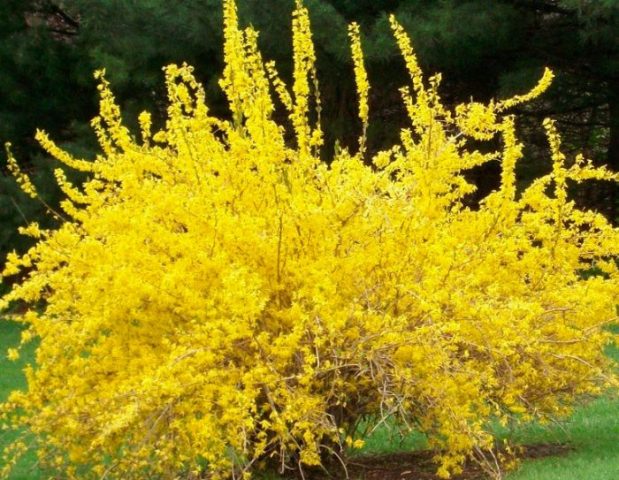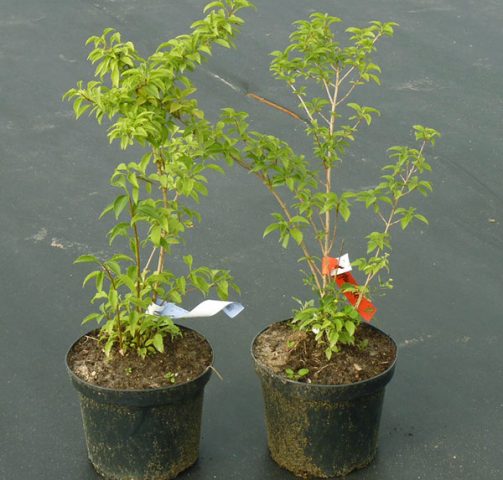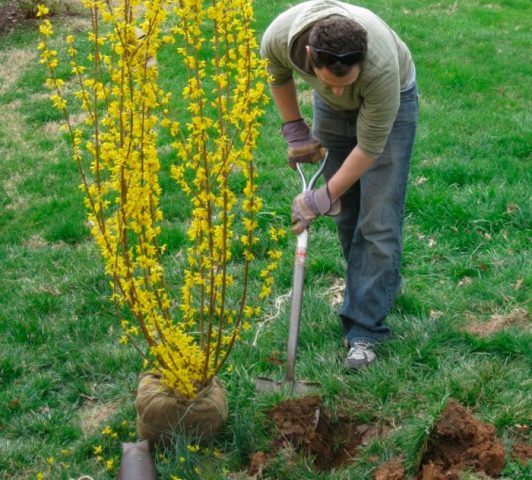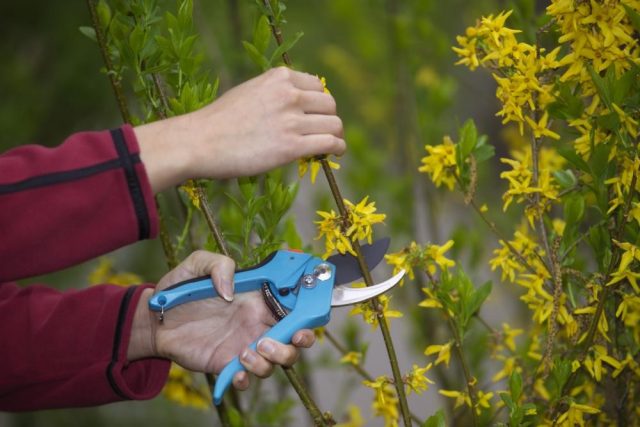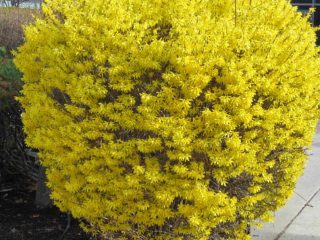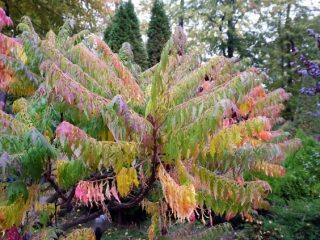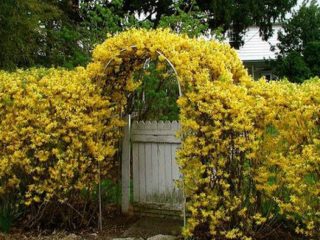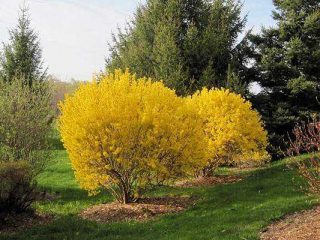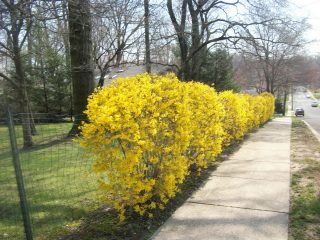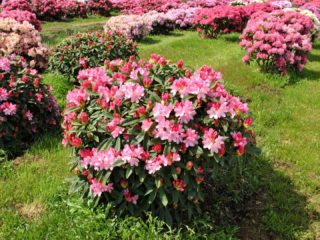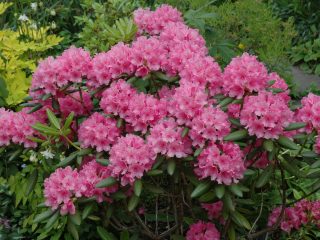Content
European forsythia is a tall, branchy deciduous shrub that looks spectacular both in single plantings and in flower arrangements. Most often, this type is used to form a hedge. The leading characteristics of the plant are unpretentiousness, frost resistance, disease resistance and immunity to air pollution levels. Thanks to these qualities, the shrub is grown in almost all regions of Russia, not only in personal plots, but also in city parks and playgrounds.
A description of European forsythia and a photo of a shrub are presented in the sections below.
Description of European forsythia
European forsythia (in Latin - Forsythia europaea) is a fast-growing species of spreading shrubs of the Olive family, native to the Balkan Peninsula. The plant can reach 2-3 m in height, with an average diameter of 2.5-3 m. The average annual growth of this garden crop is about 25 cm both in height and in width. The lifespan of European forsythia varies from 50 to 70 years.
The shoots of the species are strong, resilient and erect. The shape of the crown is ovoid, slightly elongated. The leaves are small - no more than 8 cm in length, light green, oval, slightly narrowed towards the end. The flowers of Forsythia European are similar in appearance to large bells of a rich dark yellow color. Their diameter is 3.5-4 cm.
A characteristic feature of the species is the early flowering in April or even in March, which occurs long before the leaves bloom. The end of flowering is at the end of October. For the first time, European forsythia blooms 3-4 years after planting.
The plant is frost-hardy, however, its drought resistance is average. Seed germination is only 20%, so the species is propagated mainly by vegetative methods.
Planting and caring for European forsythia
European forsythia is usually planted in open sunny areas, since in the shade there is an inhibition of bush growth. The species is demanding of heat, however, it tolerates low autumn temperatures well and does not need shelter in central Russia. Even if the shoots freeze out in especially harsh winters, the shrub quickly recovers in spring. In the Northern regions, the trunk area under the bushes is sprinkled with dry leaves before winter.
The type of soil in the garden area does not really matter, however, European forsythia prefers moderately dry, fertile, drained soil.
Preparation of the planting site and seedling
Despite the fact that the shrub does not have special requirements for the composition of the soil, it grows best on alkaline soil. In the event that the level of acidity of the soil on the site is too high, it is recommended to slightly correct the composition of the soil. For this, the selected place is dug up a few weeks before planting and wood ash is added to the soil.
Planting European forsythia
Planting of plants is carried out both in spring and autumn. In the second case, it is usually September-early October.
Recommended planting scheme for European forsythia: 70 cm x 150 cm. Planting is carried out according to the following algorithm:
- In the prepared area, planting holes are dug with a depth of 60 cm and a diameter of 50 cm.
- A drainage layer is laid at the bottom of the pit. For this, you can use different materials: broken brick, gravel, crushed stone, broken clay shards. The drainage layer should be at least 15 cm, preferably 20 cm.
- A small amount of fine-grained sand is poured over the drainage layer. Enough 5-10 cm in thickness.
- Above, it is necessary to form a low hill from a soil mixture based on leafy earth, peat and sand, taken in a ratio of 2: 1: 1. If desired, it can be diluted with wood ash - 150-200 g of the substance is enough. Such an additive will not only serve as a good preventive measure against some diseases of the root system, but will also act as a kind of first feeding for the shrub.
- After that, you can lower the seedling into the hole. Taking into account the drainage layer, soil mixture and sand interlayer, the roots of the plant should be located at a depth of 30-40 cm.
- The root system is evenly distributed over the earthen slide and sprinkled with soil.
- The near-trunk soil is lightly tamped and watered.
Watering and feeding
Water forsythia European in moderation. In conditions of frequent rains, watering is not at all necessary. In dry summers, the bushes are watered once every 3-4 weeks. Water consumption per plant is 10-12 liters. After watering, it is recommended to slightly loosen the soil near the plant - this improves the air permeability of the soil. After loosening, the trunk circle is covered with a thin layer of mulch. Compost is usually used for these purposes.
Top dressing of European forsythia is carried out 3 times per season:
- For the first time, the shrubs are fed in the spring, in March. For this, rotted manure is used, which, after application, should not touch the plant trunk. After feeding, the planting is watered without fail.
- In April, mineral fertilizers are applied to the soil in a proportion of 60-70 g per 1 m2.
- After flowering, Kemira Universal is used as a top dressing. Dosage: about 100 g per 1 m2.
Plant pruning
Young seedlings of European forsythia are subjected only to sanitary pruning, the essence of which is to remove damaged and dry shoots. This is done in order to give the bush a well-groomed appearance, but such pruning does not affect the shape in any way.
An adult forsythia is cut in the spring only if the ends of the branches are frozen in the bush in winter. More substantial pruning is done in summer, after flowering. In this case, faded shoots are removed, which are cut out by half of the total length. Old branches are pruned at a height of 40-50 cm from the ground. This pruning stimulates the active formation of lateral shoots.
Rejuvenating forsythia pruning involves shortening all of its branches by 2/3.
Preparing for winter
Frost resistance of European forsythia is quite high, however, in the Northern regions, young plants can freeze out without shelter. The advantage of the species is its rapid recovery after moderate frostbite.
As a shelter for the winter, only that material is used that allows air to pass through well. Otherwise, the forsythia can snuff out during the thaw.
Before covering the bush, the near-stem section is mulched with a thin layer of humus. The branches of the shrub are carefully bent to the ground and sprinkled with spruce branches.
Reproduction
Forsythia is propagated vegetatively: by cuttings or layering.
Breeding with green cuttings is done according to the following scheme:
- In June, part of the shoots is cut off by 15-18 cm from the bush.
- The bottom of the cuttings is cleaned - for this, the leaves are removed in this part.
- After that, the slice is treated with a growth stimulant. You can use the drug "Epin" for these purposes.
- Then the cuttings are planted in a greenhouse, in perlite or sand.
Reproduction by lignified cuttings is a little different:
- Shoots are pruned in October.
- The planting material is planted directly into the open ground at the same time.
- For better wintering, plantings are sprinkled with dry leaves.
The method of reproduction by layering is no less popular. The procedure is very simple:
- In summer or early autumn, a young shoot is chosen at the bottom of the bush.
- At the base, the selected branch is pulled together with a thin wire.
- The end of the shoot is slightly cut and buried.
- By spring, it forms its own root system. Then the resulting layering can be deposited.
You can learn more about the propagation of forsythia by European cuttings from the video below:
Diseases and pests
Forsythia European practically does not get sick with a fungus and rarely attracts insects. Of the pests, only a nematode can be distinguished, from which the root system of the bush can suffer. In order to get rid of this pest, the soil under the plant must be sprayed with "Carbation".
Despite the good resistance of the species to diseases, sometimes planting can be affected by moniliosis or bacteriosis. In the first case, forsythia begins to wither quickly, gray sporulation pads appear on the leaves and shoots. At the first signs of the disease, the plant is treated with a weak solution of "Fundazol".
Forsythia affected by bacteriosis cannot be saved. If the plantings are struck by this ailment, the diseased bushes are dug up as quickly as possible and burned away from the garden plot. Signs of bacteriosis: the appearance of dark spots, wilting.
Conclusion
European forsythia is a very popular early flowering ornamental shrub in Russia, which is highly valued for its resistance to many diseases and undemanding care. This species looks especially impressive in the composition of flower arrangements along with evergreen crops: thuja, spruce, juniper, but single planting of forsythia on the lawn or planting plants on a green hedge are no less popular.
